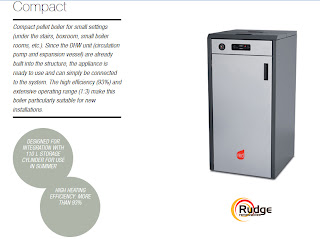We have had a few queries about the possibility of installing a 'self use' battery backup system as an add on for solar PV. The text below is a recent blog entry I put together for YouGen, and I've brought it across here to share too.
Self Use systems
To understand why you might want to install a self use system, it is first useful to remind ourselves of the principles of the feed-in tariff scheme.
Feed-in tariff benefits are based on three tiers:
1) Basic FiT payments which get paid for every unit of power generated, whether you use it or not.
2) Export payments which are are currently paid on a 'deemed' basis. Under this tier, 50% of generated power is assumed to have been exported and payouts are made on that principle.
3) Using as much PV generated power within your house without affecting your FiT payments.
Until recently, homeowners have generally seen it as a no-brainer to go for tier three and try to use as much generated power as they could for themselves. For many people, this meant investing in devices such as the ImmerSun and SolariBoost which use the excess electricity to heat water in your cylinder.
However, there is another option which only the well-heeled have been able exploit until recently: storing the excess generated power to be used after the sun has gone down.
Though there have been a number of custom built devices based on existing off grid equipment and specialist contactors, the technology to achieve this goal has only become more widely available in the last couple of years.
How does it work?
For the vast majority of self use systems, the installer will need to split off your high power circuits from your consumer unit and have them operating on grid only. Ideally if the self-use unit runs your lights, central heating boiler and some low current circuits, this will make the best use of your stored power. Simply connecting the incoming power to the consumer unit will potentially rapidly drain the batteries within minutes of sundown as soon as you put the kettle on or have an electric shower. The batteries will need replacing very soon at that rate.
 How much space do they take up?
How much space do they take up?
There are an ever increasing array of self-use systems coming onto the market. Some are good, a few look very doubtful! They will need to have a control box with pure sine inverter and a set of rechargable batteries. This all takes up space. The batteries are heavy and ideally need to be accessible and in a vented location if based on lead acid technology to ensure hydrogen build up cannot occur.
Most of the systems we have installed are in the customer's garage, which is an ideal location. Battery sizing is important as the larger the battery, the more you can store. In addition larger batteries generally have a longer life. Some low-cost self-use units have cheap, low-capacity batteries which will not do the job they promise.
Which system should I choose?
One of the first units to hit the shelves in the UK was the Nedap Power Router. Made by an established Dutch electronics company, this diversion from their usual automation trade proved successful in Europe a few years back, and is growing in popularity in the UK, especially since their unit costs have come down. The identifiable green housing is a one-box solution, with solar PV inverter, battery charging and monitoring and control circuitry all in one neat housing. On top of this, they have a built in optional internet interface which allows you to be interactive with what your power is doing. Quite apart from the fact that this is a great one for gadget geeks, it was, for some time, the only system available for installers such as ourselves to offer.
To install one of these as a retrofit onto an existing PV system you will have to replace your existing inverter with the power router. Set up is quite straightforward, and it should include web monitoring, to help you get the best out of the system.
The big let down of this unit's design is that your total generation meter, on which that all-important feed-in tariff payment is based, has to be installed on the output, after the power has been stored in the batteries. However, since powr is lost in the charge, storage and power conversion process, you will potentially lose up to 20 per cent of FiT generation payments per year. Not so good if you are relying on these payments to cover an investment. Otherwise, the Power Router can still be seen as a flagship for domestic self use.
The Victron Power Hub is an alternative to the Power Router, and our current favourite. Although it does not have the comprehensive built-in internet interface that allows you to manage and view your usage, the cost is far less and it has real advantages on a retro-fit on an existing PV system.
1) You keep your existing PV inverter.
2) The total generation meter is fitted to record all the solar output ensuring you get paid for all the you've generated.
The Power Hub is simply retrofitted into existing PV systems. You just need space for the unit and a set of batteries.
Victron only released its official Power Hub early in the summer, and we are getting lots of interest in this lower cost device that offers the same storage options as the Power Router, but without the price tag. As with any battery system, the battery set included will affect both short term and long term performance of your system. Victron systems have a recommended battery set for inverter/ Power Hub size combinations.
Harking back to their off-grid and marine roots, the Power Hub also works well as a backup system, which will switch in within 20ms (milliseconds) during a power cut. This application, which ensures your battery system only runs essential services such as lights and the boiler, is ideal as it will keep your house alight for hours when everyone else is in darkness. If your house is in a remote rural location with a weak grid connection, this unit really is the one for you as it will provide energy security with the self use option as well.
There are also a few other emerging self use devices coming onto the market. I've not actually seen any yet, but having heard from customers who tell us that their device's batteries are low capacity or, in one case, the subject of misleading national newspaper advertising, it becomes apparent that it really is crucial to do your research before
committing. We were approached recently to see if we wanted to attend product training on one device, but after some probing we found the training was simply how to sell it rather than technical specifying. Already it seems that the rogue traders whom we thought had gone from renewables have come back with a new angle.
If you are interested in getting a self-use system installed, and indeed there are a few good reasons why you should, make sure you make contact with an established local installer. Just as with any other product, going with the first cold call offer or with a company who approaches you while you're out shopping will never get you the best system, or indeed the best price. Make sure you get a few quotes before committing.
Currently, due to battery costs, the installations are not cheap and the financial payback will be long. However, we do have one customer who pays £15 a month for electricity, which gives him a cosy feeling of energy security as power prices continue to rise.
 The new unit clearly makes no apologies for changing technology from the lower cost 'power burst' to gradual and smooth transition of power over to the immersion heater. It looks robust and made for the job. As an added bonus, the Display and control software has been extensively upgraded to provide a far clearer operation, showing you what is excess power is being sent to your immersion heater and more.
The new unit clearly makes no apologies for changing technology from the lower cost 'power burst' to gradual and smooth transition of power over to the immersion heater. It looks robust and made for the job. As an added bonus, the Display and control software has been extensively upgraded to provide a far clearer operation, showing you what is excess power is being sent to your immersion heater and more.













